
The Uffizi Gallery is a prominent art museum located adjacent to the Piazza della Signoria in the Historic Centre of Florence in the region of Tuscany, Italy. One of the most important Italian museums and the most visited, it is also one of the largest and best-known in the world and holds a collection of priceless works, particularly from the period of the Italian Renaissance.

Thomas Beaufort, Duke of Exeter was an English military commander during the Hundred Years' War, and briefly Chancellor of England. He was the third of the four children born to John of Gaunt, Duke of Lancaster, and his mistress Katherine Swynford. To overcome their problematic parentage, his parents were married in 1396, and he and his siblings were legitimated in 1390 and again in 1397. He married the daughter of Sir Thomas Neville of Hornby, Margaret Neville, who bore him one son, Henry Beaufort. However, the child died young.

Philippe de Mornay, seigneur du Plessis Marly, usually known as Du-Plessis-Mornay or Mornay Du Plessis, was a French Protestant writer and member of the anti-monarchist Monarchomaques.

The Battle of Ivry was fought on 14 March 1590, during the French Wars of Religion. The battle was a decisive victory for Henry IV of France, leading French royal and English forces against the Catholic League by the Duc de Mayenne and Spanish forces under the Count of Egmont. Henry's forces were victorious and he went on to lay siege to Paris.

Ivry-sur-Seine is a commune in the Val-de-Marne department in the southeastern suburbs of Paris, France. It is located 5.3 km from the centre of Paris.
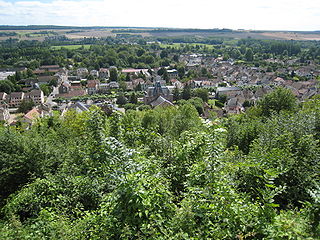
Ivry-la-Bataille is a commune in the Eure Department in the Normandy region in northern France. Ivry-la-Bataille was formerly known as Ivry.
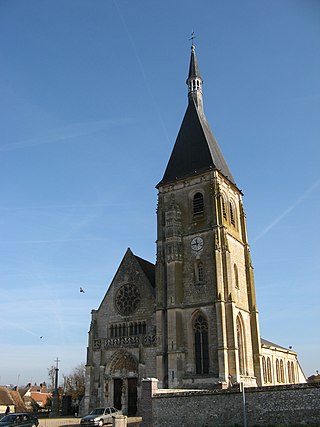
Anet is a commune in the Eure-et-Loir department in the Centre-Val de Loire region of north-central France. It lies 14 km north-northeast of Dreux between the rivers Eure and Vesgre, the latter flowing into the former some 4 km northeast of Anet town hall.

Louis des Balbes de Berton de Crillon was a French soldier, called the Man without Fear and, by Henry IV the Brave of the Brave.
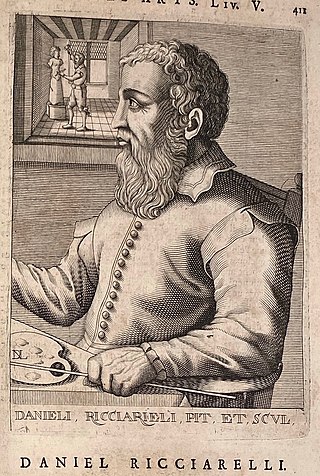
Daniele Ricciarelli, better known as Daniele da Volterra, was a Mannerist Italian painter and sculptor.
Saint-Georges-Motel is a commune in the Eure department in Normandy in northern France.

Claude de La Trémoille, 2nd Duke of Thouars was a sixteenth-century French nobleman of the La Tremoille family. He was the son of Louis III de La Trémoille and his wife, Jeanne de Montmorency.
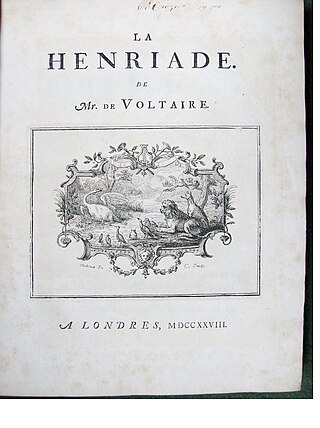
La Henriade is an epic poem of 1723 written by the French Enlightenment writer and philosopher Voltaire. According to Voltaire himself, the poem concerns and was written in honour of the life of Henry IV of France, and is a celebration of his life. The ostensible subject is the siege of Paris in 1589 by Henry III in concert with Henry of Navarre, soon to be Henry IV, but its themes are the twin evils of religious fanaticism and civil discord. It also concerns the political state of France. Voltaire aimed to be the French Virgil, outdoing the master by preserving Aristotelian unity of place—a property of classical tragedy rather than epic—by keeping the human action confined between Paris and Ivry. It was first printed in 1723, and reprinted dozens of times within Voltaire's lifetime.
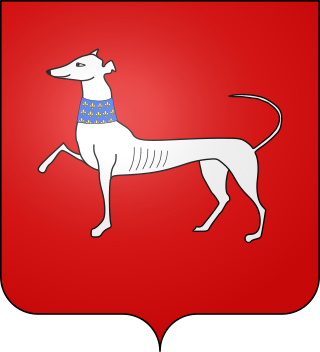
Guillaume Fouquet de la Varenne was a French chef who became an important statesman in the service of Henry IV.

Philip, Count of Egmont was the fifth Count of Egmont, prince of Gavere and 12th and last Lord of Purmerend, Purmerland and Ilpendam.
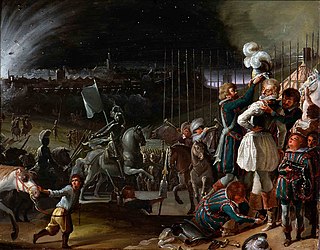
The siege of Paris took place during the French Wars of Religion when the French Royal Army under Henry of Navarre, and supported by the Huguenots, failed to capture the city of Paris from the Catholic League. Paris was finally relieved from the siege by an international Catholic-Spanish army under the command of Alexander Farnese, Duke of Parma.

The Triumphal Entry of Henry IV into Paris is a 1627 oil on canvas by the artist Peter Paul Rubens, measuring 367 by 693 cm. It shows Henry IV of France's entry into Paris in 1594. It forms a pair with Henry IV at the Battle of Ivry - both were bought by Cosimo III de' Medici in 1686. They are both now in the Uffizi Gallery in Florence, where they have been since 1773.

Alessandro Pieroni was an Italian architect and painter. He was active mainly in a Mannerist style, working for the courts of Grandukes Francesco I and Ferdinando I de' Medici, Grand Duke of Tuscany.
Events from the year 1590 in France
Juliane (Juliana) de Fontevrault, was a French noble, the illegitimate daughter of King Henry I of England. She is notorious for attempting to murder her father. An account of these events can be found in the Historia Ecclesiastica by Orderic Vitalis.

Henri IV's white plume, emblem of King Henri IV of France, was originally a large bouquet of white feathers worn on Henri IV's helmet during the battle of Ivry on March 14, 1590, during the Wars of Religion. The plume, mentioned in the first accounts written just after the battle, served as a rallying point for the royal army on the battlefield. It was also a symbol that brought together Catholic supporters of Henri IV and Huguenots, and then, after Henri IV's conversion, all Frenchmen.

















